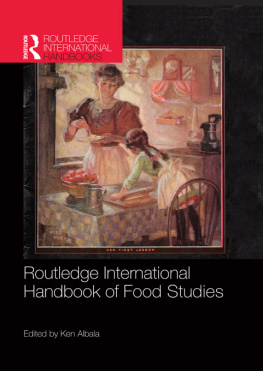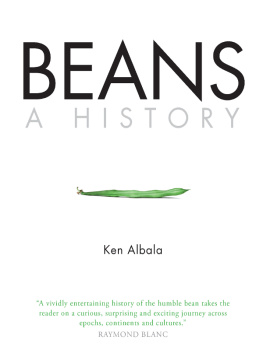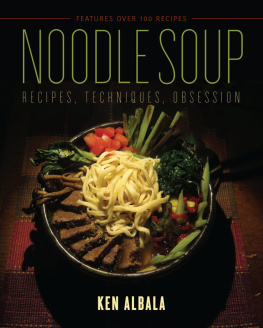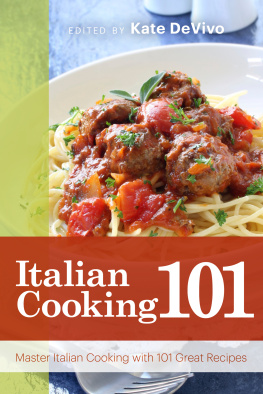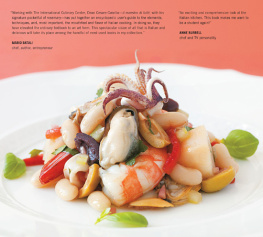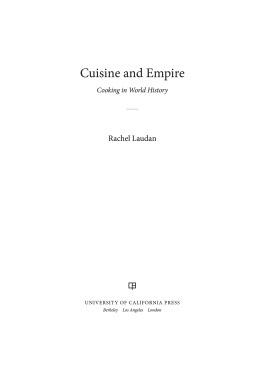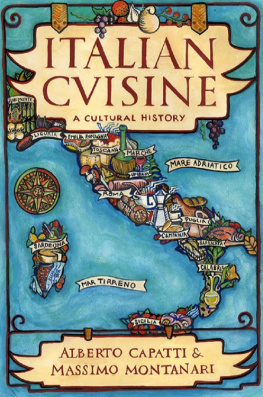T HE RECIPES found at the end of most chapters pull everything togetherthe technology, ingredients, and flavor combinations and preferencesand include some standard recipes of the three cuisines. These are more than simply recipes, however. Information about the social context, setting, mealtimes, and ideas about food will accompany each dish. So, too, will practical instruction for making these recipes, which we encourage as the experiential component of this text. Cooking and tasting are integral to the learning process here. Some recipes will be drawn from history, mainly to illustrate the roots of these cuisines, but most are contemporary and sometimes even drawn from descendants of the parent cuisines; that is, hybrids that exist outside of China, Mexico, and Italy. As this is a textbook on world cuisines, we must show how these recipes were adapted globally.
When thinking about the flavor combinations in these recipes, it will be apposite to recall what actually happens in the physical act of tasting. Naturally we first think of flavor on the tongue: the four primary flavors of salt, sour, sweet, and bitter. The fifth, umami , flavor might be included as well. It is essentially a flavor that intensifies other flavors. It is derived from the natural glutamates in foods such as mushrooms and Parmigiano cheese and monosodium glutamate. But rarely do we merely taste with the tongue. Aromas are equally important, and instead of merely listing them as a wine taster mightfor example, the aroma of thyme, leather, or tobaccothey do fit into broader categories. Here we might list smoke; all herbaceous aromas; all floral aromas; all bright, citrusy aromas; and so forth, as primary flavor principles. Also essential is the mouthfeel: Is a food tannic (that is, having the puckering effect of tea and other astringent foods)? Does it burn with spicy heat like a chili pepper, or is it pungent like horseradish, mustard, and garlic? It is creamy and unctuous, or slimy? Is it crunchy? All these are essential components of flavor.
More important, most recipes consciously make use of several of these flavor/aroma/mouthfeel elements, or even all of them in balance. Taste is comparable to music in this regard. Rarely is a single note presented, but rather various notes at different pitches in harmony, plus different textures, timbres, or tone colors, are heard. The same note from a saxophone sounds different from a flute. In cooking, sweet flavors are played against sour ones, crunchy textures are balanced with smooth and creamy ones, and piquant seasonings liven the mixture. For example, consider what makes an interesting barbecue sauce. The base may be tomato, but it is livened with acid such as vinegar. Aromatics like oregano or cumin may lie beneath the smoke. A hint of sweetness, perhaps from honey, rounds out the flavor. Garlic adds pungency. Chili pepper adds heat. Too much of any single element ruins the harmony. Take note in the recipes how flavors are balanced in this way.
Finally, perhaps the most important organ of taste is the brain. Before we register sensation in looking at the food, its color and arrangement, and before we smell it, before we hear it sizzling on a platter or resonating in our head as we chomp down on it, we assess it with reason. We recall past associations, we gauge what our companions will think about the dish, we imagine what eating this particular food says about us. Is the food considered sophisticated, homey, daring, healthy, reflective of our ethnic heritage? All these will have direct bearing on how the food tastes. Of course, these meanings shift over time, from place to place, and our taste preferences evolve. Some flavors we come to appreciate only later in life, as our taste buds dull or our associations change. Nonetheless, it is important to consider what these dishes mean to the people who eat them. The context is always critical. Only then can we begin to appreciate how they actually taste, keeping in mind that taste is both a historical and cultural construct and the product of our own particular social group, family, and personal psychology. As the saying goes, there is no accounting for taste, and, in the end, the only thing that matters is what someone likes.
The recipes included here will immediately strike the reader as unconventional. They do not follow the standard recipe format as used in most cookbooks in the past century or adhere to standards commonly used in professional kitchens that deal with enormous quantities of food and use expensive equipment that few students or home cooks can afford. The purpose of the directions offered here is purely pedagogical. Basic techniques and procedures will be explained as a starting point from which readers are encouraged to experiment, indeed to play with their food.
Cooking is largely an intuitive and creative process. You only learn by doing it. Practice will yield the finished dishes as you prefer them, but slavishly following someone elses recipes will not. The amount of seasoning you add, the cooking time, and the temperature will all depend on the equipment you happen to have at your disposal and the ingredients you can find from your local purveyors. Scientific precision, or the pretense of such, has become standard because cookbook authors understandably want to copyright their recipes, and for the same reason they give them their own individual twist to encourage sales. The recipes here are anything but unique. In fact, they are not really recipes but rather descriptions of cooking procedures, and they should not be followed meticulously. They merely offer instruction, so readers will become comfortable trying out the dishes from these three traditions. We must remember that tasting is an integral part of the learning process. Eventually you will learn what you and those you feed like best. This is especially important in seasoning, and as you will see I have usually left this entirely to the discretion of the cook. Only when measurements are critical, as with cakes, are they offered.
Equally important, these are not classic recipes according to some random, arbitrary canon or some objective standard of gastronomic truth. Unlike French haute cuisine, professional chefs never codified rigorously the basic repertoire of Italian, Chinese, and Mexican cuisines. These are procedures that were developed in home kitchens over generations. They necessarily change over time and may vary widely from region to region and from household to household. That is, they are living, constantly evolving traditions. It would be preposterous to claim that any of these directions constitutes the single correct way to cook a particular dish. Such a claim would inevitably meet with objection. Likewise, the descriptions of procedures are not intended to be definitive. They are, in fact, the way I have figured out how to make them in a standard American kitchen, though there has been no conscious effort to adapt them to American tastes. Undoubtedly they were made differently in the past in their country of origin and are made differently today by every cook. Again, think of these as the practicum, the pedagogical exercises that help you apply the principles learned in the text, much like the hypothetical problems one finds in an algebra text.
You will also note that the directions are suggestive rather than stringently prescriptive. For the vast majority of dishes, it will not make much of a difference if you cook it more or less or toss in one particular herb as opposed to another. For perfectly practical reasons, substitutions are suggested. There is no point in using substandard ingredients only because a recipe commands you to do so, or even worse, never to try a recipe simply because you lack a particular ingredient. In many cases, one fish easily stands in for another, the same technique will work on a wide variety of vegetables, or something may naturally be left out simply because you do not like it. As with all cooking, there are laborious, time-consuming ways to make things as well as shortcuts. I will leave it to you to decide which you prefer, though I will note that the slower procedures usually make things taste better and are almost always cheaper. For the purpose of learning, knowing the basics from scratch is liberating. It gives you the choice to cook the best food you can, whereas using too many industrially made quick and convenient ingredients makes you dependent on the people who manufacture them. It is not that such products are necessarily bad tasting or bad for you, but opening a jar of premade pasta sauce teaches you nothing. You are a mere consumer. Starting with fresh tomatoes, or even canned if they are not in season, will lead you to discover the basic principles that make a good sauce and then open up the possibility of creating something that suits your palate and will help you succeed in the kitchen.


